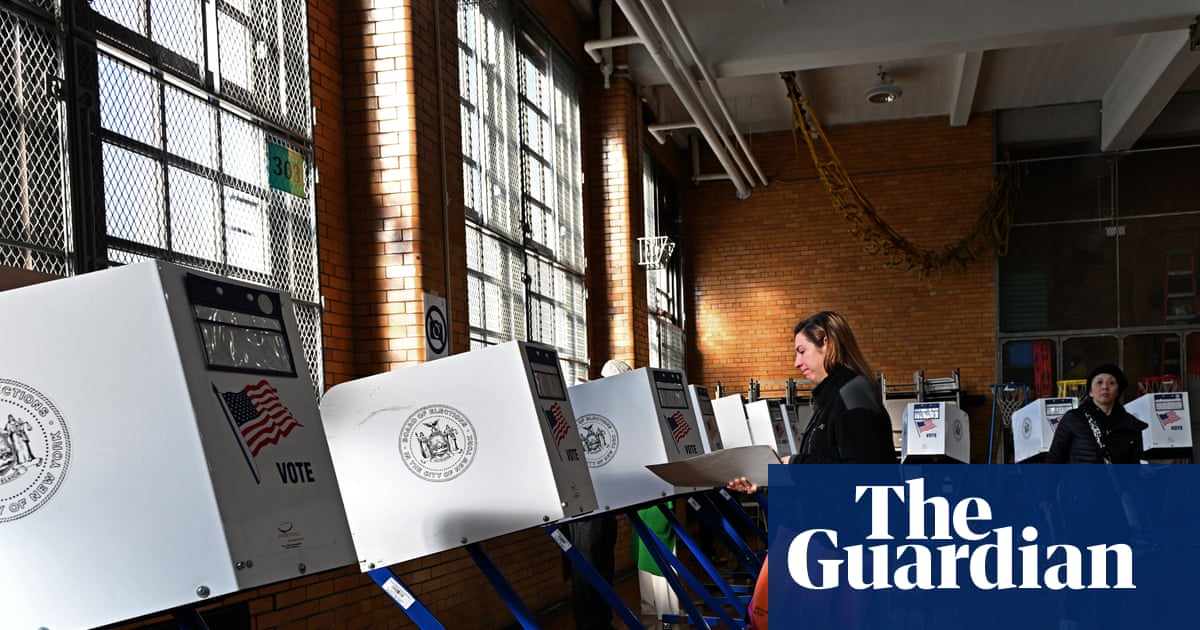For a period of time this summer, the battle over redistricting was the biggest political news story in the country. Texas Democrats drew national attention to the issue when they fled their state en masse to prevent Republicans from passing a new congressional map that could give the GOP even more seats in Congress after next year’s midterms.
Democrats in California, New York and Illinois jumped into the fray, insisting that their states would also create new maps to counter the GOP’s efforts in Texas. Then Republicans in red states said they would do the same.
Texas Democrats eventually came home, allowing Republicans to approve their new map. The topic has largely fallen out of the headlines since then. But the redistricting fight has not stopped. Over the past few months, a number of states have been quietly moving forward with plans to install new district maps.
So far, Republicans have the edge. Only two states, Texas and Missouri, have officially approved new maps. That puts the current scorecard at six additional seats for Republicans and zero for Democrats.
California could come close to evening things up if Golden State voters approve a Democratic redistricting plan next month. But the outlook in the rest of the country strongly favors the GOP. Republicans have significantly more opportunities to secure extra seats in red states than Democrats have in blue states. If things break the GOP’s way, they could realistically increase their advantage in Congress by a dozen or more seats.
Another big source of uncertainty is an ongoing legal case surrounding Louisiana’s congressional map. In that case, the Supreme Court is considering whether to overturn a portion of the Voting Rights Act that prohibits racial gerrymandering. If the justices do eliminate that provision, it would theoretically free up states to redraw their maps entirely based on the new rules that the court hands down. That ruling isn’t expected until some time in 2026, though, which might be too late for states to make changes in time for the midterms.
So much is happening in so many states that there’s no real way of knowing what the final tally will look like, but it’s clear that the result of the redistricting fight could go a long way toward deciding which party controls the House of Representatives after next year’s election.
Here’s a rundown of where things stand in states that are at least considering redistricting, and what it might mean for the balance of power in Congress if they do.
Texas
Potential swing: GOP +5
Republicans in Texas set off the nationwide redistricting fight when they moved to replace the state’s district lines with a heavily gerrymandered new map that could secure the GOP five additional seats in the House after next year’s midterms. Democrats pulled out every stop to try to prevent the plan from going through, including leaving the state to block the legislature from meeting, but Republicans were ultimately able to pass it.
Now, the issue has moved to the courts. Democrats have sued, arguing that the GOP’s new map is illegal. A federal court began hearing arguments in the case earlier this month.
California
Potential swing: Democrats +5
Democrats in California responded to Texas’s redistricting by setting their own plan in motion to effectively balance out the gains the GOP made in the Lone Star State. Their path to do that, though, is much more complicated. California typically uses an independent commission. The legislature has to ask voters for permission to override the commission to put its own maps in place through a ballot measure. Voting on that measure has started, but the results won’t be in until next month. If it passes, the new map will likely be in place for the midterms. If the measure fails, then Democrats’ best — possibly only — chance at countering the GOP redistricting drive will come up empty.
Florida
Potential swing: GOP +3
Florida Republicans kicked off the early stages of redrawing the state’s maps in August, but have not taken any formal action since then. Redistricting does appear to still be on the agenda, based on recent statements from Gov. Ron DeSantis, who has been campaigning to have even more congressional seats awarded to his state. DeSantis also said earlier this month that the result of an ongoing Supreme Court case centered on Louisiana’s map could “have implications” for Florida. The GOP already holds 20 of the state’s 28 districts, but experts say they are potentially targeting three additional seats in South Florida.
Timing could be an issue, however. The court’s decision in the Louisiana case may not be released until well into 2026, which may be too late for the state to have a new map in place in time for the midterms. State laws could also complicate their efforts. An amendment added to the Florida Constitution in 2010 prohibits lawmakers from drawing districts for partisan gain or in a way that deliberately diminishes the voting power of minorities.
Ohio
Potential swing: GOP +2 or +3
Unlike other redistricting states, Ohio is obligated to redraw its maps this year. It also has a unique process that’s designed to promote bipartisanship in the creation of its congressional districts. If that process fails, though, the final say could be left up to the Republican-controlled legislature. Ohio has a special redistricting commission that has until the end of this month to design a map that can satisfy members of both parties. If the commission comes up short, it will be up to the state General Assembly — where Republicans hold a supermajority — to draw the state’s district lines.
North Carolina
Potential swing: GOP +1
Republicans in the North Carolina legislature on Monday announced plans to redraw their state’s map to create one more safe Republican district. North Carolina’s map already heavily favors the GOP, who hold 10 of the state’s 14 Congressional seats in a state where Trump received less than 51% of the vote in last year’s presidential race. That map is being challenged in court as part of a lengthy legal back-and-forth over redistricting in the state. The new map would need to be approved by both chambers of the state legislature, which Republicans control. Under North Carolina law, Democratic Gov. Josh Stein does not have the power to veto any redistricting plan that they pass.
Missouri
Potential swing: GOP +1
Missouri is the only state other than Texas that has officially enacted new maps that change the partisan balance. Last month, the Republican-led state legislature approved new district lines that eliminate one of the state’s two Democratic districts and replace it with a safe Republican district. Democrats have sued to block the map from being used. They are also gathering signatures in hopes of putting a measure about redistricting on the ballot, which would likely prevent the map from being used until after voters have had their chance to weigh in.
Indiana
Potential swing: GOP +1
The White House has been putting heavy pressure on Republicans in the Hoosier State in hopes of convincing them to undergo redistricting. Vice President JD Vance has traveled there twice in recent months, and Trump met privately with GOP legislative leaders in the Oval Office. So far, though, their pitch has not been enough to convince lawmakers or Republican Gov. Mike Braun, who have mostly avoided commenting on the issue in either direction. Even if they do get fully on board, there’s only so much that the GOP can gain in Indiana. They already control seven of the state’s nine congressional districts. The lines of one of the remaining districts could conceivably be trimmed to make it more competitive, experts say, but the other is one of the bluest districts in the country.
Utah
Potential swing: Democrats +1 or +2
Republicans have nothing to gain in Utah. They already control all four of the state’s congressional seats. The risk for the GOP is that they might lose one or even two of those seats thanks to an ongoing legal battle. In August, a judge found that the current map violates state law and ordered the legislature to submit a new one. The revised map creates a lot more vulnerability for Republicans. Instead of splitting the state’s lone Democratic stronghold, Salt Lake City, into four parts, it only cuts the city in half. That leaves behind a pair of districts that would lean Republican, but Democrats could conceivably win in a “blue wave” year. The process isn’t over yet, though. The judge still needs to decide whether the new map complies with state law and would consider even more proposed maps if she rules that it doesn’t.
Maryland
Potential swing: Democrats +1
The most realistic opportunity for Democrats to pick up any extra seats outside of California appears to be Maryland. So far, very little action on redistricting has taken place. Gov. Wes Moore has said that redrawing the state’s maps is “on the table,” but has not fully endorsed the idea. A redistricting proposal was brought forward in the state legislature, but hasn’t been acted on. Another problem for Democrats is that they already hold all but one of the state’s congressional seats. Turning that lone red district blue could be difficult because any new map would have to navigate around Chesapeake Bay to connect Democratic areas in the west to the Republican-dense areas in the east.
Illinois
Potential swing: No change
Illinois Gov. J.B. Pritzker was one of the most prominent Democratic voices during the standoff over Texas’s new maps, but his own state appears unlikely to play a role in the redistricting fight. Despite pressure from top members of their party in Congress, a crucial number of Indiana Democrats have rejected the idea of redistricting. Even if they change their minds, there’s not much ground for Democrats to gain in the state. Illinois is already considered to be one of the most gerrymandered states in the country. Even carving out a single additional Democratic district would be a challenge, experts say.
New York
Potential swing: No change
Unlike in Illinois, Democrats’ problem in New York isn’t a lack of enthusiasm for redistricting. It’s a lack of opportunity. Gov. Kathy Hochul has been adamant about installing more favorable district lines, but the state’s laws make it next to impossible for that to happen before the midterms. New York also uses an independent commission for redistricting. Like in California, there are ways to override the commission, but the process is much slower than it is in the Golden State — long enough that the new maps probably won’t be in place until the 2028 election.

 German (DE)
German (DE)  English (US)
English (US)  Spanish (ES)
Spanish (ES)  French (FR)
French (FR)  Hindi (IN)
Hindi (IN)  Italian (IT)
Italian (IT)  Russian (RU)
Russian (RU) 























Comments